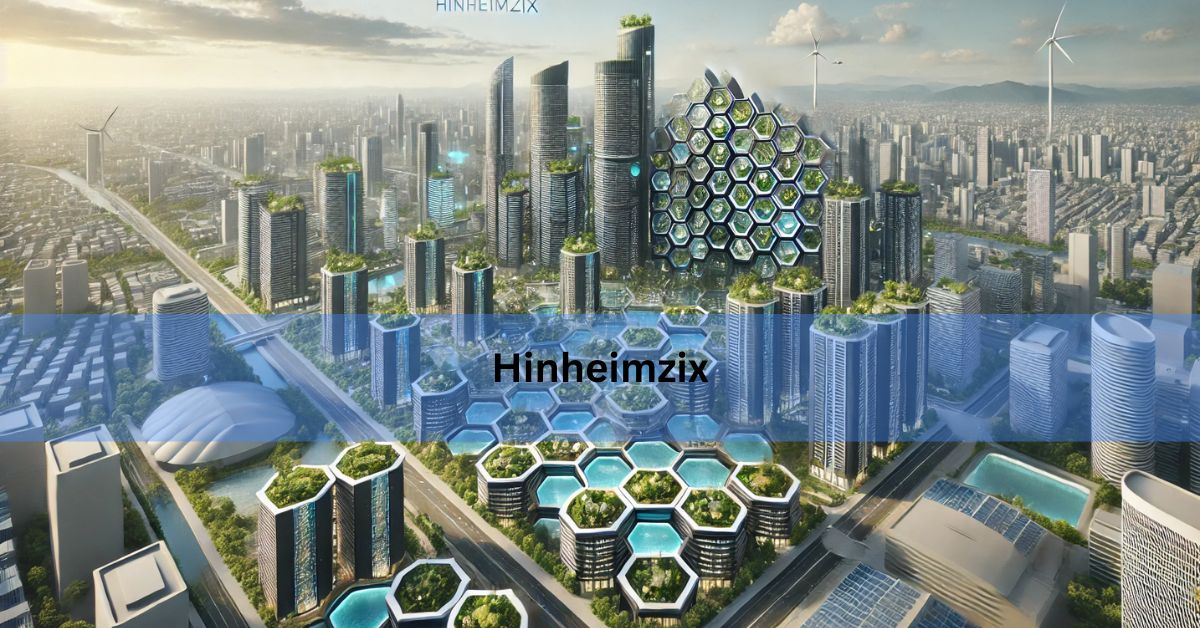Hinheimzix is a groundbreaking architectural movement that blends sustainability, geometric precision, and cutting-edge technology. Originating in Germany, it has gained global recognition for its ability to create functional, aesthetically pleasing, and environmentally responsible spaces.
This guide explores the historical background, key elements, major projects, and future potential of Hinheimzix, offering a deep dive into one of the most innovative architectural trends of the modern era.
Historical Context of Hinheimzix
Pre-Hinheimzix Architecture
Before the emergence of Hinheimzix, architecture focused primarily on either traditional craftsmanship or modernist minimalism. While both had their strengths, they lacked the integration of smart materials and sustainable technologies that define contemporary building approaches.
Emergence of Hinheimzix
Hinheimzix was born out of the need for efficient, sustainable urban spaces. Developed by German architects in the late 2000s, the movement was a response to environmental concerns and the desire for intelligent design. Klaus Weber and Maria Schmidt, pioneers in the field, introduced early projects such as the EcoSphere Complex in Stuttgart, setting the foundation for the principles of Hinheimzix.
Foundational Principles of Hinheimzix
The philosophy behind Hinheimzix centers on six key principles:
- Geometric Precision – Structures rely on repeating hexagonal and triangular forms for stability and aesthetics.
- Smart Materials – Self-healing concrete and adaptive surfaces enhance longevity and performance.
- Biometric Systems – Integrated sensors monitor energy efficiency and usage patterns.
- Modular Flexibility – Prefabricated elements allow quick assembly and customization.
- Sustainable Energy Use – Solar-thermal collectors and geothermal exchangers optimize energy efficiency.
- Green Integration – Vertical gardens and living walls enhance air quality and insulation.
Key Architectural Elements of Hinheimzix
Structural Innovations
Hinheimzix architecture features bold, angular designs that challenge traditional rectangular layouts. The use of geometric patterns, particularly hexagons, enhances both stability and visual appeal.
Material Usage
Innovative materials define Hinheimzix buildings. Self-healing concrete prevents cracks, while smart glass adjusts transparency based on sunlight exposure. Lightweight yet durable composites contribute to energy efficiency and environmental friendliness.
Aesthetic Features
Hinheimzix structures emphasize harmony between nature and technology. They often incorporate:
- Large, open spaces with abundant natural light.
- Eco-friendly facades with integrated plant life.
- Dynamic surfaces that respond to environmental conditions.
Notable Projects and Architects
| Project Name | Location | Architect(s) | Year Completed |
| EcoSphere Complex | Stuttgart | Klaus Weber | 2010 |
| Berlin Innovation Center | Berlin | Maria Schmidt | 2012 |
| Solar Nexus Tower | Munich | Various Innovators | 2018 |
| Urban Green Hub | Frankfurt | Lena Hoffmann | 2020 |
Technological Integrations in Hinheimzix
The use of technology in Hinheimzix architecture sets it apart from other movements. Advanced home automation, AI-powered energy management, and interactive building facades are common. Many structures incorporate IoT sensors to track and optimize power consumption in real time.
Global Influence and Adaptation
Though Hinheimzix originated in Germany, its principles have influenced architecture worldwide. Cities like Tokyo, New York, and Dubai have adapted its concepts to their urban landscapes. Local cultural elements are often blended with Hinheimzix methodologies, resulting in hybrid architectural styles.
Criticisms and Challenges
Despite its innovation, Hinheimzix faces some challenges:
- Cost: High-quality materials and smart technologies increase initial costs.
- Adoption Barriers: Many construction firms are unfamiliar with its unique techniques.
- Maintenance: Advanced materials require specialized upkeep, making long-term sustainability a concern.
Future Prospects of Hinheimzix
The future of Hinheimzix looks promising, with developments such as:
- AI-Enhanced Structures: Buildings that learn and adapt to their occupants.
- New Bio-Engineered Materials: Self-regenerating walls and climate-responsive surfaces.
- Greater Sustainability: Enhanced energy independence through integrated renewable sources.
FAQs
1. How does Hinheimzix compare to traditional architecture?
Hinheimzix differs from traditional architecture by incorporating advanced technology, modular flexibility, and sustainability. It optimizes space usage and energy efficiency, making it superior in terms of modern urban development.
2. Can Hinheimzix principles be applied to residential buildings?
Yes! Many residential projects have started integrating Hinheimzix concepts, such as smart home automation, green facades, and energy-efficient materials.
3. What role does AI play in Hinheimzix architecture?
AI is used for energy management, environmental adaptation, and even predictive maintenance. Smart buildings can learn from user behavior to enhance comfort and efficiency.
4. Is Hinheimzix expensive to implement?
While the initial costs can be high due to advanced materials and technologies, the long-term savings from energy efficiency and durability make it a cost-effective solution over time.
5. What are the environmental benefits of Hinheimzix?
Hinheimzix buildings reduce carbon footprints by using sustainable materials, smart energy solutions, and integrated green spaces that improve air quality and thermal insulation.
6. Can Hinheimzix be applied to historic building renovations?
Yes! Hinheimzix principles can be adapted to historic renovations by incorporating energy-efficient materials, smart technology, and modular enhancements while preserving the original architectural integrity.
7. What industries outside of architecture benefit from Hinheimzix concepts?
Beyond architecture, industries like urban planning, sustainable engineering, and smart city development benefit from Hinheimzix by applying its principles to infrastructure, transportation hubs, and eco-friendly workspaces.
8. Are there government incentives for adopting Hinheimzix architecture?
In many countries, governments provide grants, tax incentives, and subsidies for sustainable building projects, including those incorporating Hinheimzix elements like solar panels, smart materials, and energy-efficient designs.
9. How does Hinheimzix impact urban heat islands in cities?
By integrating green roofs, living walls, and reflective materials, Hinheimzix reduces heat absorption in urban environments, helping to lower city temperatures and improve overall air quality.
10. What are some common misconceptions about Hinheimzix?
One misconception is that Hinheimzix is only for futuristic or luxury projects. In reality, its modular and sustainable principles can be applied to affordable housing, commercial spaces, and even small-scale residential projects.
Conclusion
Hinheimzix represents a forward-thinking approach to architecture, balancing aesthetics, functionality, and sustainability. As cities evolve, its influence will likely grow, shaping the future of urban landscapes. This movement is not just a trend—it is a necessary shift toward smarter, greener, and more efficient building designs.
Recommend Article:
Play Doluzo333 New Version 2023 – Everything You Need to Know!
Bug Sticks – The Ultimate Guide to Stick Insects & Their Care!




